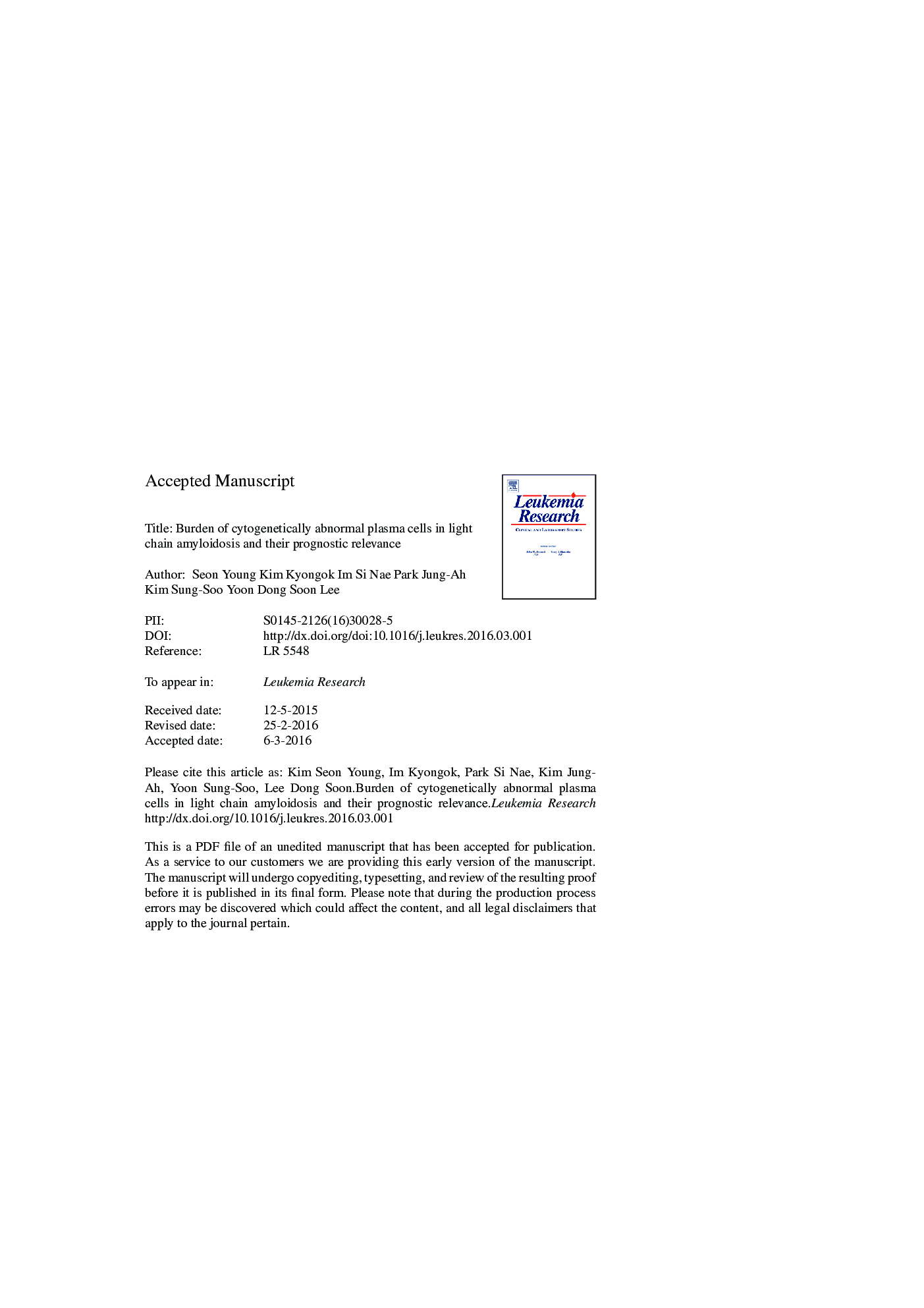| Article ID | Journal | Published Year | Pages | File Type |
|---|---|---|---|---|
| 8453494 | Leukemia Research | 2016 | 27 Pages |
Abstract
We performed cytoplasmic fluorescence in situ hybridization assays of light chain amyloidosis (AL). In total, 234 patients were enrolled: 28 patients with AL, 24 with monoclonal gammopathy of undetermined significance (MGUS), and 182 with multiple myeloma (MM). Chromosomal abnormalities were detected in 13 of 22 (59%) AL patients without MM. All 13 patients demonstrated IGH rearrangement, and t(11;14)/IGH-CCND1 was most frequent (32%). Chromosome gain was not observed in AL patients without MM. These findings were dissimilar to findings in MGUS patients, in whom trisomy 9 was the most frequent abnormality. Of 6 AL patients with MM, 5 (83%) patients had cytogenetic abnormalities: 1q gain (4/6, 67%), gains of chromosome 9 (3/6, 50%), IGH rearrangement and RB1 (13q) deletions (2/6 each, 33%). The percentage of clonal plasma cells among total plasma cells was variable (median, 75%; range, 16-100%) for AL patients without MM, which was lower than the results for MM patients (median 100%). The overall survival of AL patients without MM was not significantly different according to the presence of cytogenetic abnormalities (PÂ =Â 0.510). In summary, among Korean AL patients, IGH rearrangement was the most frequent cytogenetic abnormality and cytogenetic aberration patterns differ compared with MGUS and MM patients.
Related Topics
Life Sciences
Biochemistry, Genetics and Molecular Biology
Cancer Research
Authors
Seon Young Kim, Kyongok Im, Si Nae Park, Jung-Ah Kim, Sung-Soo Yoon, Dong Soon Lee,
